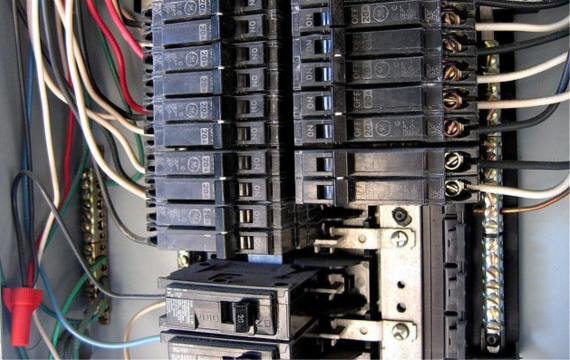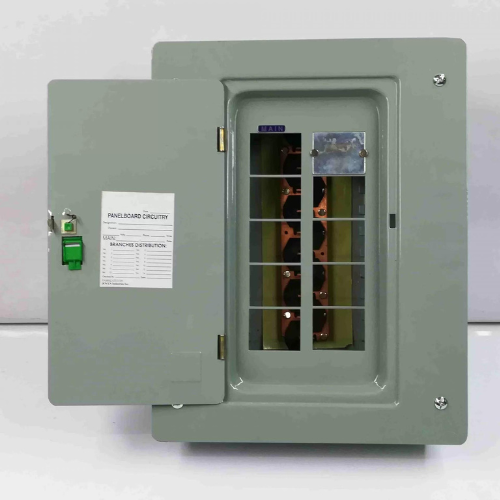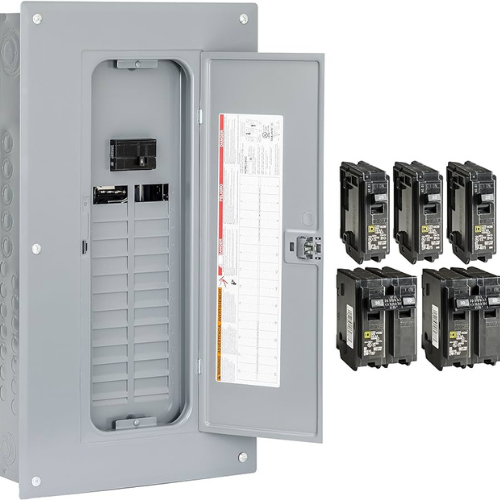The circuit breaker panels are very crucial in modern electrical systems. They help in safeguard homes and businesses against common electrical hazards. But what exactly is a circuit breaker panel? How does it work? What are its functions? What are the components inside a circuit breaker panel? This comprehensive guide will discuss these questions and other key elements of circuit breaker panels. Whether you are an electrician, homeowner, business owner, or simply curious about electrical systems, this article will provide valuable insights. Keep reading to learn more!
What is a Circuit Breaker Panel?
throughout the home. These are typically a flat metal panel with the color brown or gray. It is commonly installed in a basement, utility room, or garage. Circuit breaker panels can also be installed in an accessible closet or cabinet.
Depending on the circuit breaker panel rating, it can provide up to 200amp of power to every home. However, a circuit breaker panel that can provide up to 400amps is needed for houses with numerous appliances. The total power capacity of the breaker panel will be distributed to each branch circuit housed in the panel.

How Does it Work?


Technically, a circuit breaker panel works through the following:
- The individual circuit breaker switch housed inside the electrical panel is responsible for monitoring the electrical flow of each circuit.
- The circuit breakers inside the panel are individually rated according to their current capacity.
- When turned on, the switch allows the electricity to flow from the main supply into your home.
- The switch will automatically turn off or trip off if it detects excessive electrical current flow than its preset rating.
What Does a Circuit Breaker Panel Composed of?


The service entrance wire of an electrical system links to the lugs. Lugs are two sizable terminals found near the bottom or top of the panel. The lugs should remain energized all the time except when there is an installed emergency switch or the utility company turns off the power. The lugs along with all the wiring connected to the panel box are concealed by a dead front cover. The dead front cover is a flat metal panel and can be found when you open the breaker panel door. These covers are designed with cutouts to guarantee easy access. Do not remove these covers if you don’t know anything about electrical work. Among the components inside a circuit breaker panel includes the following:

The main breaker is found underneath or above the two vertically positioned breakers inside the circuit breaker panel. The main circuit breaker panel is responsible for controlling the power for the entire building or house circuits. All the power in the entire building will be cut off if you turn of the main breaker. Nevertheless, the presence of the dead front cover does not imply that the circuit breaker panel is de-energized. Regardless if the main circuit breaker is turned off or on, the lugs remained energized connecting to the service line.

The vertically positioned breakers inside the breaker panel are the branch circuit breakers. These branch circuit breakers typically have 15 or 20 amps. The 15-amp circuit breakers are usually used to power smaller outlet and lighting circuits. While the 20-amp breakers are used for feeding special outlets or appliances. Larger breakers with 30 to 50 amps can supply power to appliances that require 240-V such as dryers, ranges, and more.

These are conductive metal bars found inside the circuit breaker panel. It carries the electrical current from the main service entrance to each circuit breaker. This is also where the vertical circuit breakers are mounted. Neutral bus bars are also part of a circuit breaker panel where neutral circuit wires and pigtail wires are connected.
Sizing
A small home may require a standard 200-amp circuit breaker panel. For larger homes, a higher breaker panel capacity ranging from 300 to 400 amps is required.
100-amp capacity circuit breaker panels are commonly found in an older home. Although it has a smaller capacity, it can work according to your requirements. Smaller circuit breaker panels often have fuses and are safe to use if properly maintained.
Upgrading to a larger circuit breaker panel is ideal if you need to add more circuits. Upgrading panels doesn’t mean increased electrical consumption. This will provide you with more space if you want to add circuits to supply your rising electrical needs.
Signs that You Should Change Circuit Breaker Panels
- If your circuit breaker panels are hissing or buzzing
- If circuit breaker panels are ungrounded, meaning it has only two prongs
- Although you don’t see any burning signs such as flames or sparks, as long as it has a burning smell, it may indicate that you need to change your panel
- When the breaker panel is hot to touch
- When the lights start to flicker if you turn on appliances



